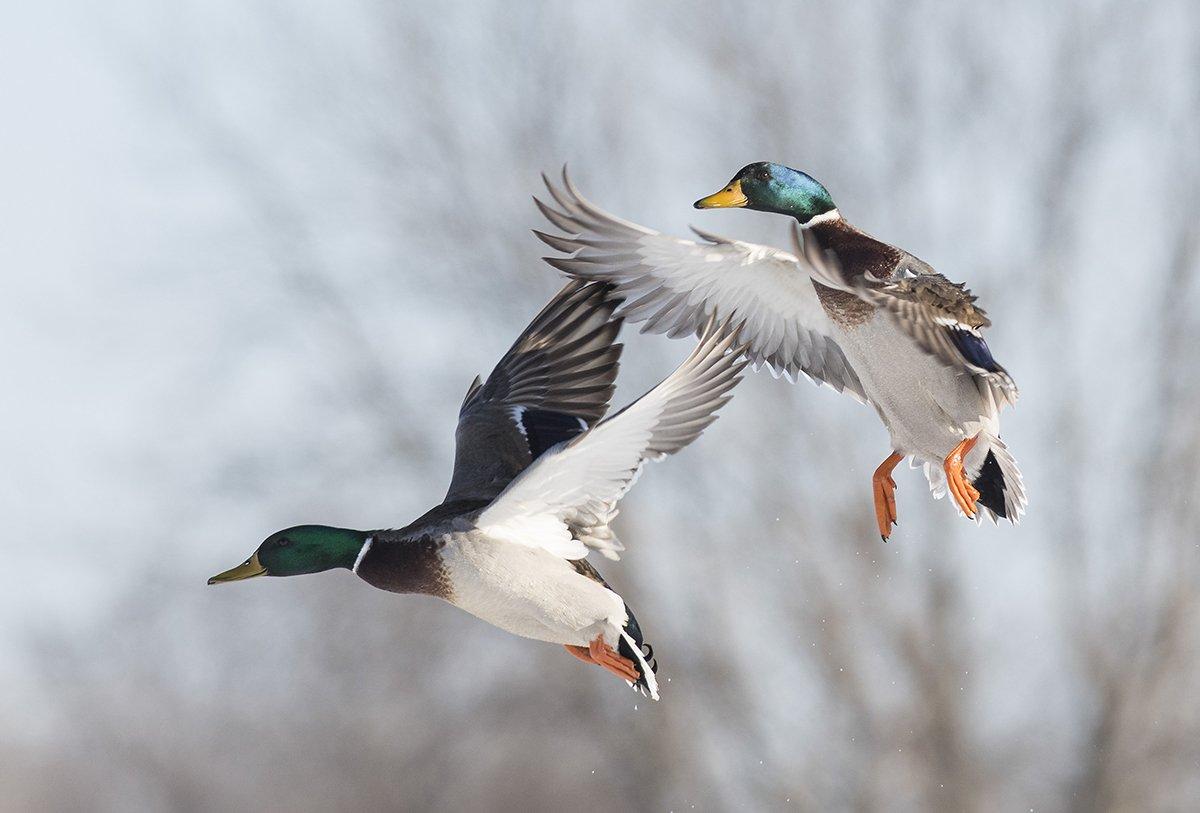Some Waterfowl Hold Tricky Surprises for Wing-Shooters
When you have shot one bird flying you have shot all birds flying. They are all different and they fly in different ways but the sensation is the same and the last one is as good as the first. ‚ Ernest Hemingway
No doubt, Papa's words hold great wisdom for wing-shooters. But even with great respect for Mr. H, I'll add a slight caveat. Some ducks fly differently enough to fool you from time to time. Much of that hinges on the weather and hunting situation, but these tricky birds will sometimes get the better of you.
Here's a look at six flying tricksters to watch for this season.
Click here for more Realtree waterfowl hunting content. And check us out on Facebook.

Every diver nut has watched a bluebill cut through the wind in an almost motionless approach to the leading edge of a decoy spread but then suddenly come to life, fire up the afterburners and accelerate in full-throttle escape mode. The typical follow-up involves three empty hulls, muffled laughter and several unprintable words.
There's only one way to beat a 'bill at this game: Never get complacent before the shot. In fact, anticipate the F-18 maneuver, and be ready for it. Swing that gun hard and fast, and give that speedster lots of lead.
Photo © Dan Logan/Shutterstock

OK, I stole this title from an excellent turkey hunting story Realtree.com contributor Tom Carpenter wrote for me years ago. Still, it has direct applications to duck hunting.
You watch as mallards or honkers circle endlessly, not quite convinced of the situation below. But as they lose altitude and lock their wings, you prepare for the fantastic finish ‚ until you see a bird appear from nowhere and plop down in your decoys. Where did it come from? I swear ducks and geese do that purposely, sending in an eager scout to test the situation.
This scenario has an easy fix. Don't get distracted by the hasty candy bird. Stay on the flockand work to finish them in the decoys. If things go well, you'll probably drop multiple birds. But even if the flock flares, you can still jump the eager lander and take home dinner.
Photo © Vlasta Kaspar/Shutterstocck

This is another bluebill classic, though it can apply to any duck. You and a buddy watch a pair of birds bank into the wind and glide toward your decoys. You'll take the one your side while he shoots the one on his. But at the last second, the ducks switch positions in mid-air. You should switch to the bird that's now on your side, but you're often so locked in on your previous target that shooting etiquette becomes an adventure.
Solution? Again, expect it, and be ready to act before it happens. Use proper shooting manners and take the bird on your side. You won't win any friends by shooting the wrong duck ‚ especially if you subsequently double on the other bird.
Photo © Steve Oehlenschlager/Shutterstock

The flock seemingly hovers above youand your buddy wonders aloud when the heck you'll call the shot. But as you rise to fire, the almost motionless targets catch the stiff wind, turn into cloud-bound rockets and flare into the stratosphere. And you wonder how something so great just went so wrong.
Solution: Always be wary of this during strong winds. Let birds work as close as possible, and then resolve to take one good shot before they go into escape mode. Subsequent volleys at fleeting targets downwind often lead to lost cripples and huge ammo bills.
Photo Vitalii Mamchuk/Shutterstock

The duck seems to be finishing perfectly, sailing toward you and already in range. Then, without warning, the bird seemingly drops from the air and lands before you can react. Your easy incoming target is now temptation for an Arkansas sluice.
Again, always be ready for this, especially with some diving ducks. If an incoming bird gives any indication of landing ‚ dropping its feet, slowing its wingbeats, sailing just inches above the water ‚ take the first good shot you get. Or, if it lands, jump it. Or shoot it on the water if you like. It's a personal choice. Just remember the old diver hunters' saying, If the water is still rippling, it's not a ground-swat.
Photo © RCK_953/Shutterstock

The geese or mallards bank and begin a steady approach to your hide. Within seconds, they'll be in range. But wait ‚ the lead bird begins to fade a bit, and before they're close enough for a shot, the birds fade and continue their circle in the opposite direction. Sometimes, this can go on for several passes, and it often ends in frustration when the birds land short.
Many factors can cause this. First, you might not be on the X, so you should consider moving your hide. Also, concealment might be an issue. Maybe birds aren't quite convinced that what they're seeing is safe. In addition, adjusting your spread helps sometimes. Give birds a large landing area, and invite them in. Above all, make sure the decoys appear natural. Those fixes won't stop every tantalizing swing, but they'll bring enough sufficiently close for a truck ride home.
Photo © Hoxel/Shutterstock






